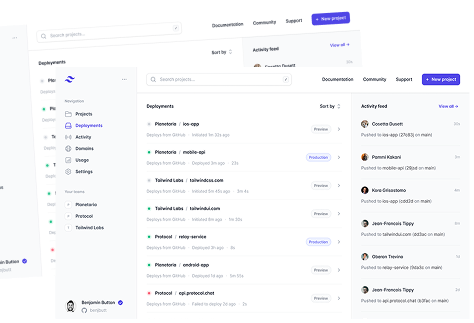Writing a budget proposal can seem daunting, but with the right approach, you can create a document that effectively communicates your financial needs and secures the funding you need. Let's break down the process step-by-step, so you can craft a budget proposal that stands out.
1. Know Your Audience
Understanding who will read your proposal is crucial. Are you writing for executives, project managers, or potential investors? Tailoring your language and the level of detail to suit your audience can make a huge difference. For instance, executives might prefer a high-level overview, while project managers could require more detailed breakdowns.
- Executives: Focus on the big picture, showcasing how the budget aligns with strategic goals.
- Project Managers: Provide detailed financial plans and timelines to aid in project execution.
- Investors: Highlight potential returns on investment and risk mitigation strategies.
By identifying your audience, you can craft a proposal that speaks directly to their priorities and concerns.
2. Define Your Objectives
Clearly outlining what you aim to achieve with the budget sets the foundation for your entire proposal. Be specific about your goals and how the requested funds will help you reach them.
Here's a simple framework to define your objectives:
- What: Describe the initiative or project that requires funding.
- Why: Explain the purpose and the benefits to the organization or community.
- How: Detail how the funds will be used to meet the objectives.
For example, if you're seeking funding for a marketing campaign, your objective might be to increase brand awareness and drive sales through targeted advertising.
3. Break Down the Costs
Transparency is key when it comes to financial details. Breaking down the costs into categories makes your proposal more digestible and shows that you've done your homework. Consider these categories:
- Personnel Costs: Salaries, benefits, and any additional human resource expenses.
- Operational Costs: Day-to-day expenses like utilities, rent, and office supplies.
- Project-Specific Costs: Materials, equipment, and services directly tied to the project.
- Contingency Funds: A buffer for unexpected expenses, typically around 5-10% of the total budget.
Here's a sample breakdown for a small project:
- Personnel Costs: $15,000
- Operational Costs: $5,000
- Project-Specific Costs: $10,000
- Contingency Funds: $2,000
- Total Budget: $32,000
4. Justify Each Expense
Every dollar in your budget should have a clear justification. This is where you connect the financial details to your objectives and demonstrate the value of each expense.
- Personnel Costs: "Hiring additional staff will increase productivity and meet project deadlines."
- Operational Costs: "Investing in new software will streamline operations and reduce long-term costs."
- Project-Specific Costs: "Purchasing high-quality materials ensures the longevity of the product."
By providing a solid rationale, you reassure stakeholders that their investment is well-planned and necessary.
5. Present a Timeline
A timeline not only adds credibility to your proposal but also helps stakeholders visualize the project's progression. A well-structured timeline should include major milestones and deadlines.
Consider using a simple Gantt chart or a timeline graphic to illustrate key phases. Here's a basic example:
- Month 1: Project kickoff and initial planning
- Month 2-3: Execution of phase one
- Month 4: Mid-project review and adjustments
- Month 5-6: Execution of phase two
- Month 7: Project completion and evaluation
6. Include a Risk Assessment
Addressing potential risks shows that you've thought ahead and are prepared to handle challenges. Identify the main risks and outline your strategies for mitigating them.
- Financial Risks: Budget overruns or funding shortfalls. Mitigation: Regular budget reviews and a contingency fund.
- Operational Risks: Delays in project execution. Mitigation: Flexible timelines and backup plans.
- Market Risks: Changes in consumer demand. Mitigation: Market research and adaptive strategies.
By being proactive about risks, you build trust with stakeholders and demonstrate your project's resilience.
7. Use Clear and Concise Language
Your proposal should be easy to read and free of jargon. Use clear, concise language and avoid unnecessary technical terms. Here are some tips:
- Be Direct: "We request $50,000 to execute the marketing campaign."
- Avoid Jargon: Instead of "leverage synergies," say "work together."
- Use Bullet Points: Break down complex information into digestible chunks.
Remember, simplicity is key. If your reader has to decipher complex language, they might lose interest or miss your main points.
8. Provide a Strong Conclusion
Wrap up your proposal with a strong conclusion that reinforces your main objectives and the benefits of funding your project. Summarize the key points and express your enthusiasm for the project.
Here's a sample conclusion:
In conclusion, securing this budget will enable us to launch a comprehensive marketing campaign, increase brand visibility, and drive sales growth. We are confident that with your support, we can achieve our objectives and deliver exceptional results.
9. Appendices and Supporting Documents
Including appendices can provide additional detail without cluttering the main proposal. Consider adding:
- Detailed Financial Spreadsheets: For those who want to dive into the numbers.
- Market Research Data: Supporting your assumptions and projections.
- Project Plans: Additional documents that outline your methodology in greater detail.
These additions can offer depth and demonstrate your thoroughness, but make sure they’re easily accessible and not overwhelming.
Final Thoughts
Crafting a budget proposal is all about clarity, detail, and persuasion. By understanding your audience, defining clear objectives, and justifying your costs, you can create a proposal that resonates. Remember, Spell can help you write and edit your proposal faster and more accurately. With AI-powered tools, you can create professional documents effortlessly, ensuring your proposal is polished and persuasive.











